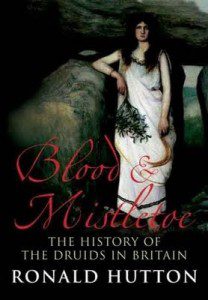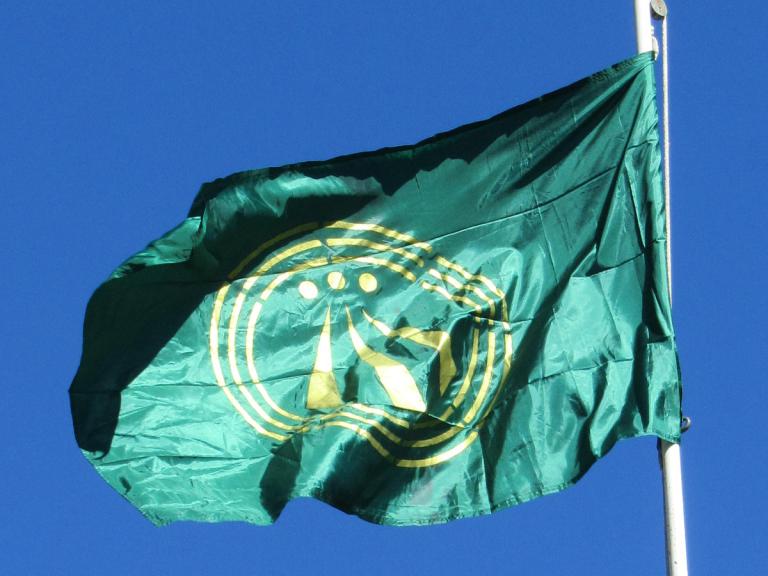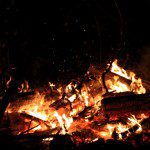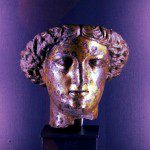I’m a member of a Druid order. I read Druid books and I go to Druid gatherings. I wear a Druid robe and I introduce myself as a Druid. But just what is a Druid?
In the past week I’ve had multiple questions on Druids and Druidry. That’s usually a sign it’s time for me to blog about the questions and my take on the answers. A full answer requires several books (which I’ll recommend at the end), but here’s a very brief introduction to Druidry as I understand it and as I practice it.
“The Druids may well have been the most prominent magico-religious specialists of some of the peoples of north-western Europe just over a couple of thousand years ago; and that is all we can say of them with reasonable certainty.” – Ronald Hutton, Blood and Mistletoe: the History of the Druids in Britain
While we don’t know much about the ancient Druids, we can make some reasonable assumptions. They were judges, healers, and keepers of records and lore in Celtic lands. They were priests, though how closely they resembled the temple priests of the Greco-Roman world is difficult to say. They were not kings, but they were community leaders, as evidenced by the Romans’ efforts to stamp them out as a source of rebellion against the empire.
The Romans did not wipe them out, but the coming of Christianity crowded them out. Druids lost one role after another, until all that was left were bards who may have known nothing about their priestly predecessors. There were no Druids for a thousand years.
The Revival Druids
As Europe began to emerge from the Middle Ages, people looked back to antiquity to answer the universal questions of “who are we?” and “where did we come from?” For many people, this meant looking back to the Greeks and Romans. But in Britain this also meant looking back to the Druids.
The problem was that while there were ample written accounts of Greece and Rome, there was virtually nothing from pre-Roman Britain. As Hutton points out, this made the Druids a blank slate who could be imagined many ways, from bloodthirsty savages to peaceful Nature worshippers to wise sages.
Eventually, people began calling themselves Druids. Few considered themselves Pagans – they were Christians in a thoroughly Christian environment. William Stukeley (1687 – 1765) performed some of the early surveys of Stonehenge and Avebury and made an attempt to “reconcile Plato and Moses, and the Druid and Christian religion.” In a 1743 publication, he claimed that the Celtic god Lugh, the Egyptian Thoth, and the Greek Hermes were all forms of the Christian Holy Spirit. It was an attempt to make Druids into the forerunners of Christ, the British equivalent of the Hebrew patriarchs of the Old Testament. The end result of the work of Stukeley and others like him was to make the Druids accessible to British and British-influenced culture.
Some of the early Druid orders were fraternal organizations, along the lines of the Freemasons or Oddfellows. Others were cultural societies, dedicated to preserving Welsh culture in the face of English domination. The pictures of Winston Churchill, Princess (now Queen) Elizabeth, and Rowan Williams (the recently retired Archbishop of Canterbury) dressed up in Druid robes are from this type of order.
The Spiritual Druids
By the early 20th century, Darwin’s work on evolution, Biblical scholars’ work on textual criticism, and geologists’ work on the age of the Earth had removed the perceived need to reconcile Druidry to Christianity and the Bible. While monotheistic concepts and the Western Mystery Tradition remained influential, these Druids also drew inspiration from the new field of psychology. They were free to interpret the stories of our pre-Christian ancestors and the even older stone monuments in what they understood to be the original pagan context – or in some new context based on their own personal gnosis. And they were increasingly inspired by Nature.
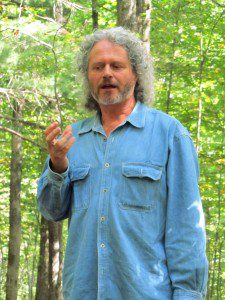
Many current Druid orders fall into this category, including the Order of Bards, Ovates and Druids, which is the largest Druid order in the world. When The Druid Network gained status as a charity in the UK in 2010 (a process far more complicated than simply filing 501(c)(3) papers in the US), OBOD Chosen Chief Philip Carr-Gomm asked “is Druidry a religion?” and then answered by saying “it’s all up to you.” At the 2012 East Coast Gathering, Philip pointed out that there are Pagan Druids, Christian Druids, Buddhist Druids, atheist Druids, and Spiritual But Not Religious Druids and he was very happy with that.
I’m a devotional polytheist, but I remain an enthusiastic member of OBOD because the order teaches spiritual techniques that are helpful to anyone with an interest in Celtic lore and a love of Nature… and because I’ve formed many wonderful friendships with my fellow Bards, Ovates and Druids.
The Pagan Druids
Did modern Druids become Pagans, or did modern Pagans become Druids? A little of both, I think. The last part of the 20th century saw Paganism expand beyond Wicca and Ceremonial Magic to include Nature-based beliefs and practices as well as the reimagining of the religions of our ancestors. For some, that was a perfect fit with Druidry.
In the US, the largest Druid order is Ár nDraíocht Féin: A Druid Fellowship. ADF was founded by Isaac Bonewits in 1983 as an intentionally Pagan order. The ADF website says they are “working to combine in-depth scholarship with the inspiration of artistry and spiritual practice to create a powerful modern Paganism.”
Like Paganism as a whole, Pagan Druidry is a movement with multiple centers – it’s hard to describe and impossible to define. It includes polytheists, mystics, animists, non-descript Nature lovers, Celtophiles and many many others.
Further Reading
This “history” is absurdly brief. It’s not intended to tell the whole story of Druidry, just to answer some high-level questions from folks who know little or nothing about it.
If this post sparks some interest, I suggest you read a good introductory book on Druidry. There are three I’ve read and can recommend with no reservations: Druid Mysteries by Philip Carr-Gomm, The Druidry Handbook by John Michael Greer, and Bonewits’s Essential Guide to Druidism by Isaac Bonewits.
Most people will be better off starting with Druid Mysteries. It’s the shortest and easiest to read, particularly for those who are looking for more spirituality than religion. If you’re looking for a how-to book, start with The Druidry Handbook – it was written as a textbook for the Ancient Order of Druids in America. If you know you want a specifically Pagan approach, start with Bonewits’s Essential Guide to Druidism.
Read all three and you’ll get a very good look at Druidry as it’s actually practiced today.
For the history of the Druids, I have three recommendations. A Brief History of the Druids by Peter Berresford Ellis is the best combination of facts and educated guesses for who the ancient Druids were and what they did. The Druids by Ronald Hutton describes how people have imagined Druids in recorded history. And Blood and Mistletoe: the History of the Druids in Britain (also by Hutton) is a thorough historical compilation of what is known about the ancient Druids (which isn’t much) and the revival Druids (which is considerable).
Druid Orders
There are many Druid orders. I’m familiar with three and can recommend them all.
The Order of Bards, Ovates and Druids (OBOD) is the largest Druid order in the world and it has the best correspondence course. If you will be working solitary or if you want a more spiritual approach, consider it. Ár nDraíocht Féin (ADF) is the largest Druid order in the US. If you want the best chance of finding a local grove, or if you want an explicitly Pagan approach, try it. The Ancient Order of Druids in America (AODA) is the most closely aligned with the revival Druids and is best suited for someone who wants to design his or her own study program.
None of these orders are “best” – the question is which one is the best fit for you. I chose OBOD because of their correspondence course and I think I made the right decision. But if I had chosen ADF or AODA, I suspect I’d be saying the same thing about them.
What Is Druidry?
If you’ve read this far, you understand this question doesn’t have a clear-cut answer. I like Thea Worthington’s response: “Druidry is the art of wild wisdom.”
But when asked “what’s a Druid?” I give a three-part answer: a Druid is a storyteller and a keeper of lore. A Druid is a seer and a keeper of wisdom. But most importantly, a Druid is a priest of Nature and the Gods of Nature.
May you find the Druidry that calls to you!


